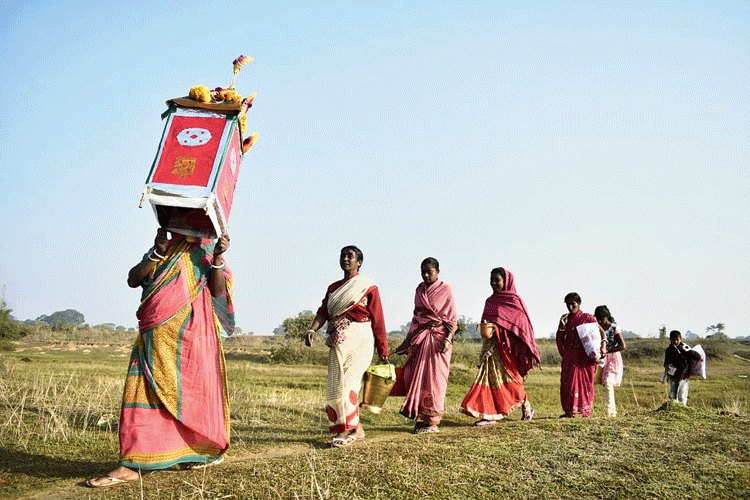True to its folk origins, Makar Sankranti is known and celebrated as Tusu Parab across vast areas of Bengal, Jharkhand and Odisha.
Goddess Tusu is worshipped with joyful festivities, food, fairs and songs — Tusu gaan — on Makar Sankranti as a harvest festival in a wide, contiguous area fanning across south Bengal, Chotanagpur and north-eastern Odisha.
Sukhram Munda, 65, of Ghagrabera village of Bundu subdivision of Ranchi district, some 35km from the capital, said their whole village of around 2,000 people celebrate Tusu with fervour.
“There are Mundas and Ganjhus in the village who all celebrate Tusu with similar rituals,” he said.
As a part of celebration, girls offer rice, flowers and some other items on a base made of rice bran at a designated place within a room and worship goddess Tusu during the entire month of Paus.
“In our village, even boys and some elderly people participate in singing and dancing with traditional musical instruments,” Munda said, adding they sometimes also visit other villages close by.
At the end of Paus, they place the instruments in a chaural, a temple like structure made of bamboo, papers and other decorative items, and go in a procession to a river or pond to immerse the chaural and bathe to mark Makar Sankranti.
“Most of us go to Raisa, a holy stream following by our village, for the ritual bath, while a few go to Kanchi river that is around 10km from the village,” he said.
He added that there have been some changes recently in the way tribals celebrate Tusu nowadays. “Some don’t immerse the chaural on Sankranti these days. Chaurals are taken to various melas in nearby villages like the one at Burudih where contests are held while other items such as rice, flowers, among others, are immersed in Makar Sankranti. Many youngsters prefer to have tall, decorative chaurals that are taken for contests in fairs with the hope to win prizes. Those chaurals are immersed a few days after Makar.”
One thing that has not changed is food. A variety of peethas, steamed and fried dumplings mostly with rice flour, are made on Makar Sankranti.
“Our mainstay is the gur peetha, also known as arsa in the region, that has jaggery and rice powder as its main ingredients,” Munda said.










